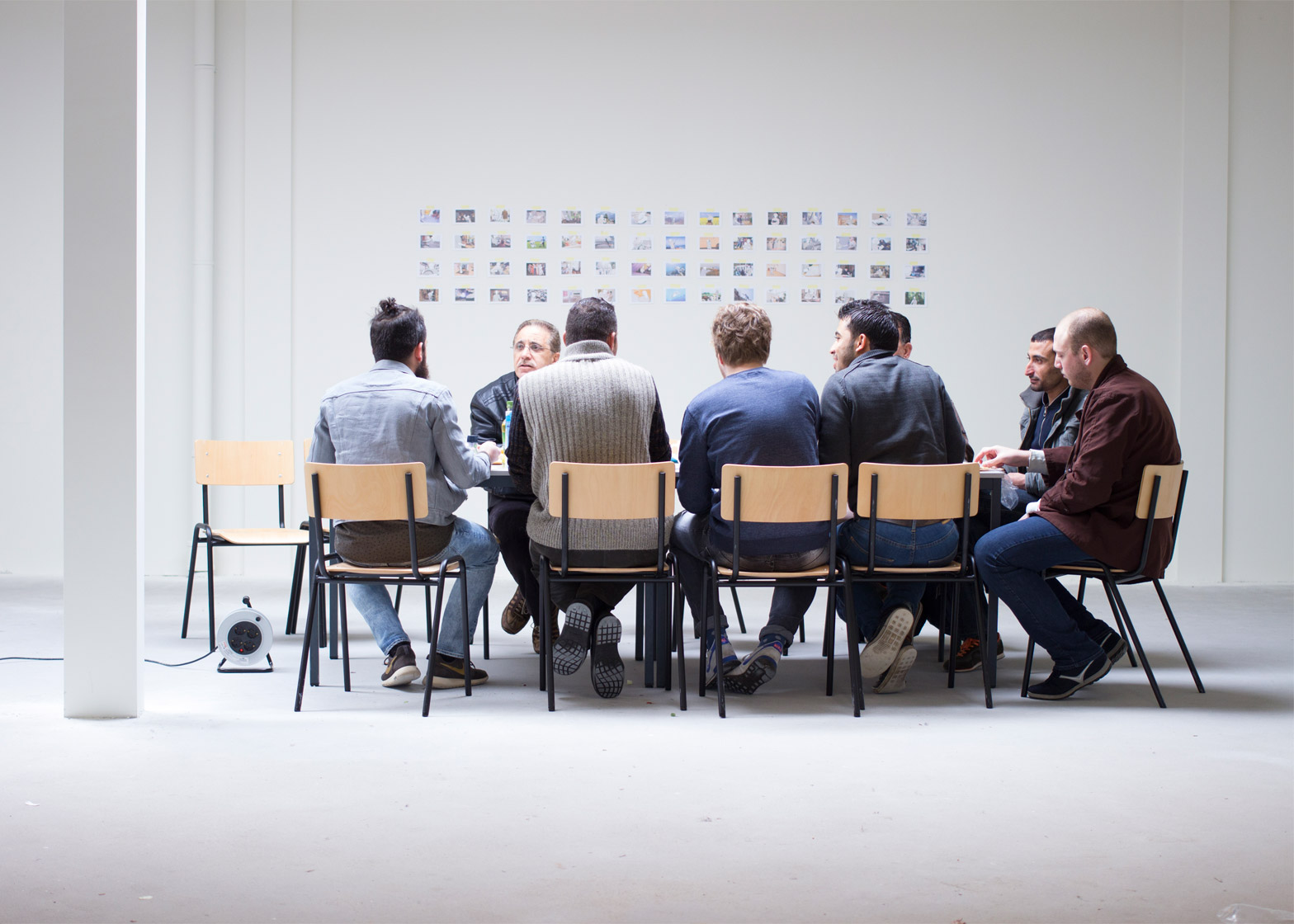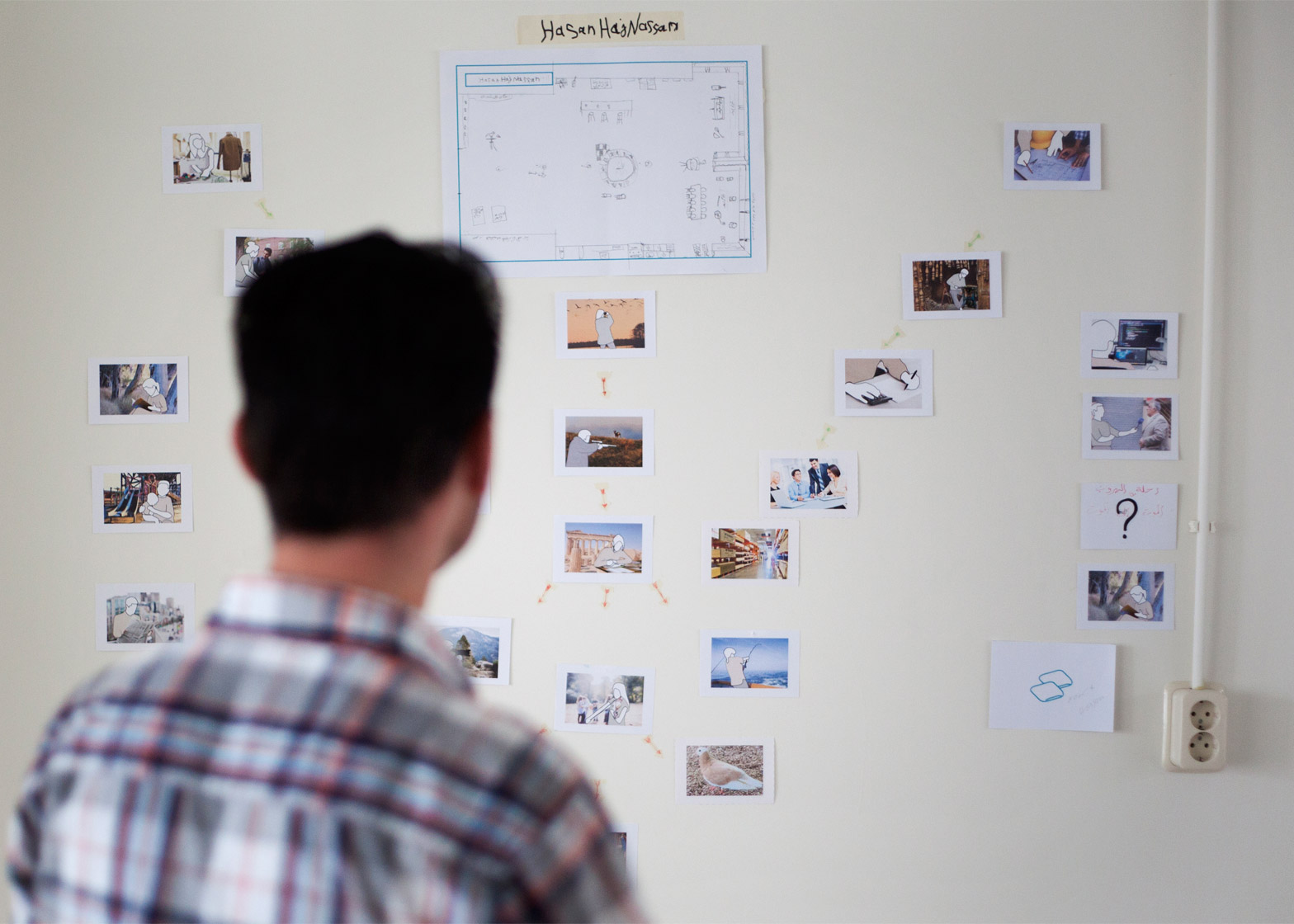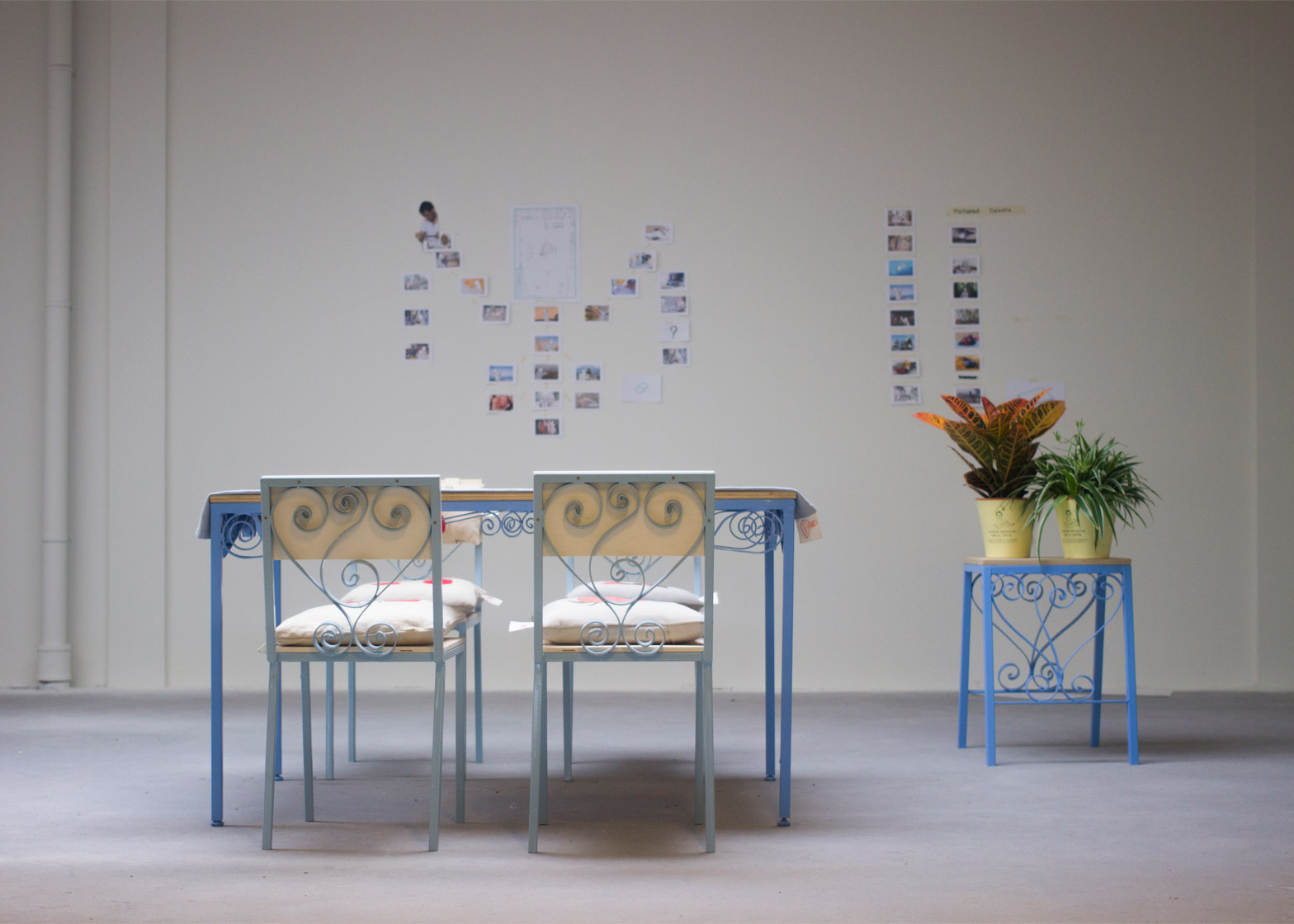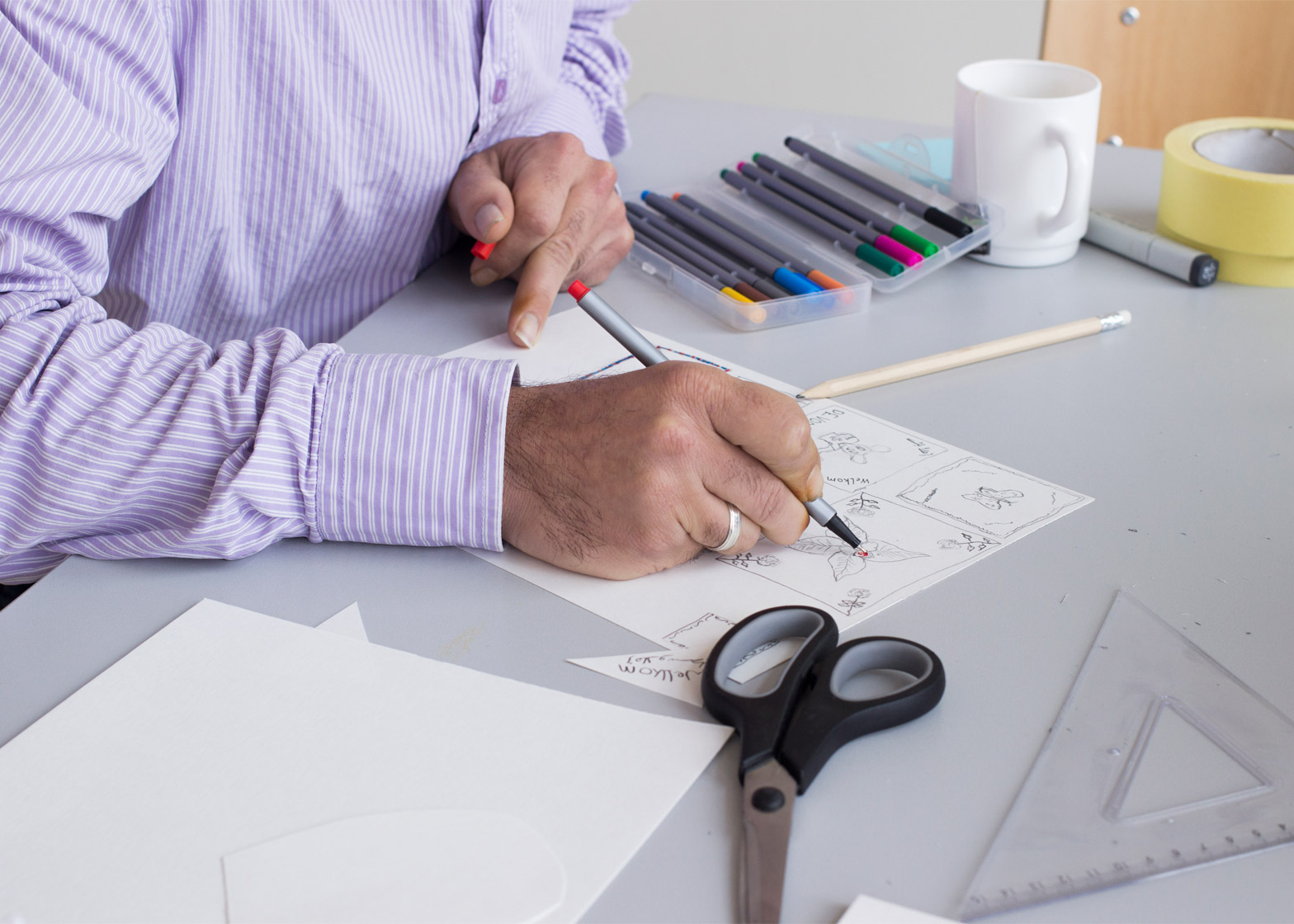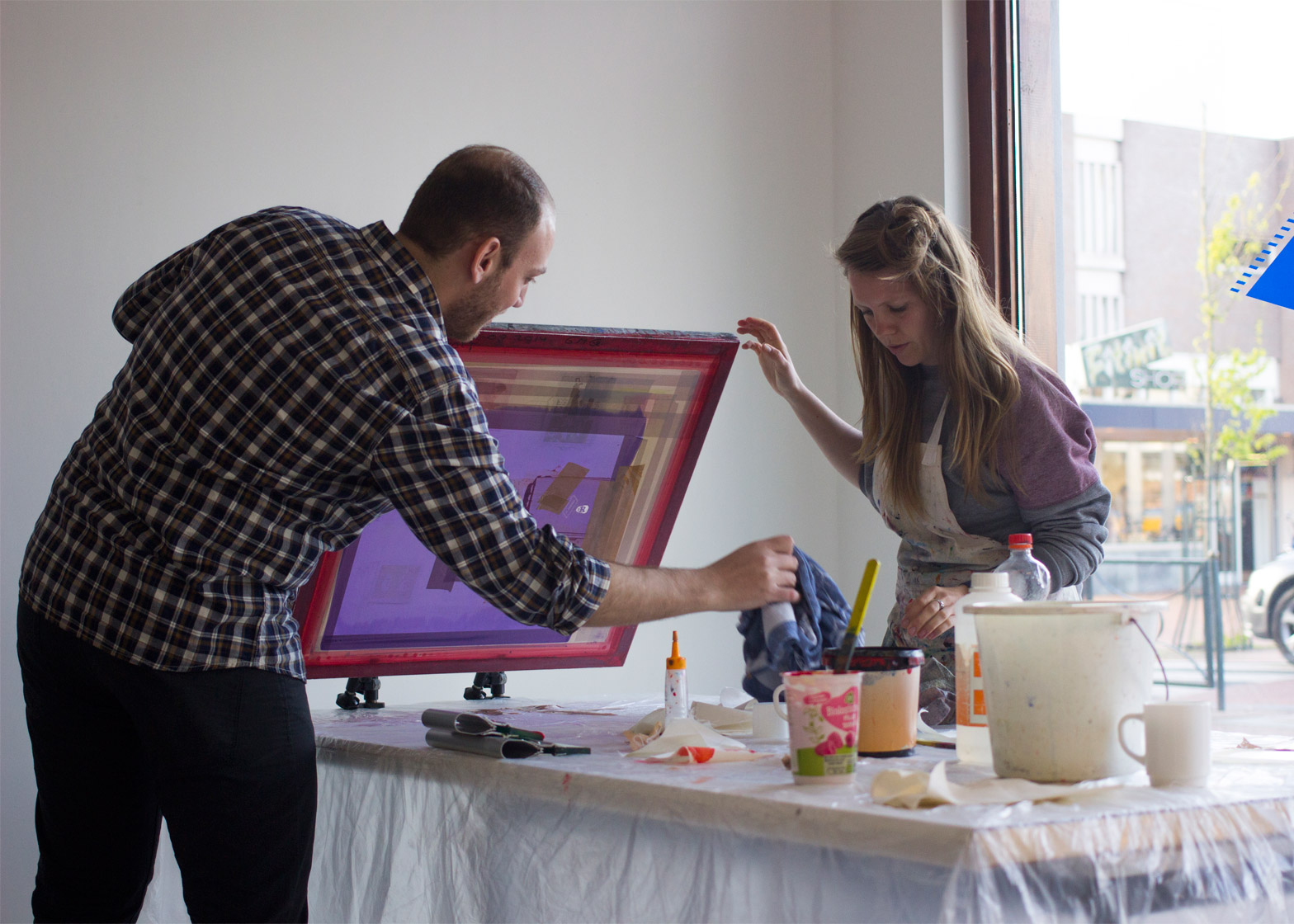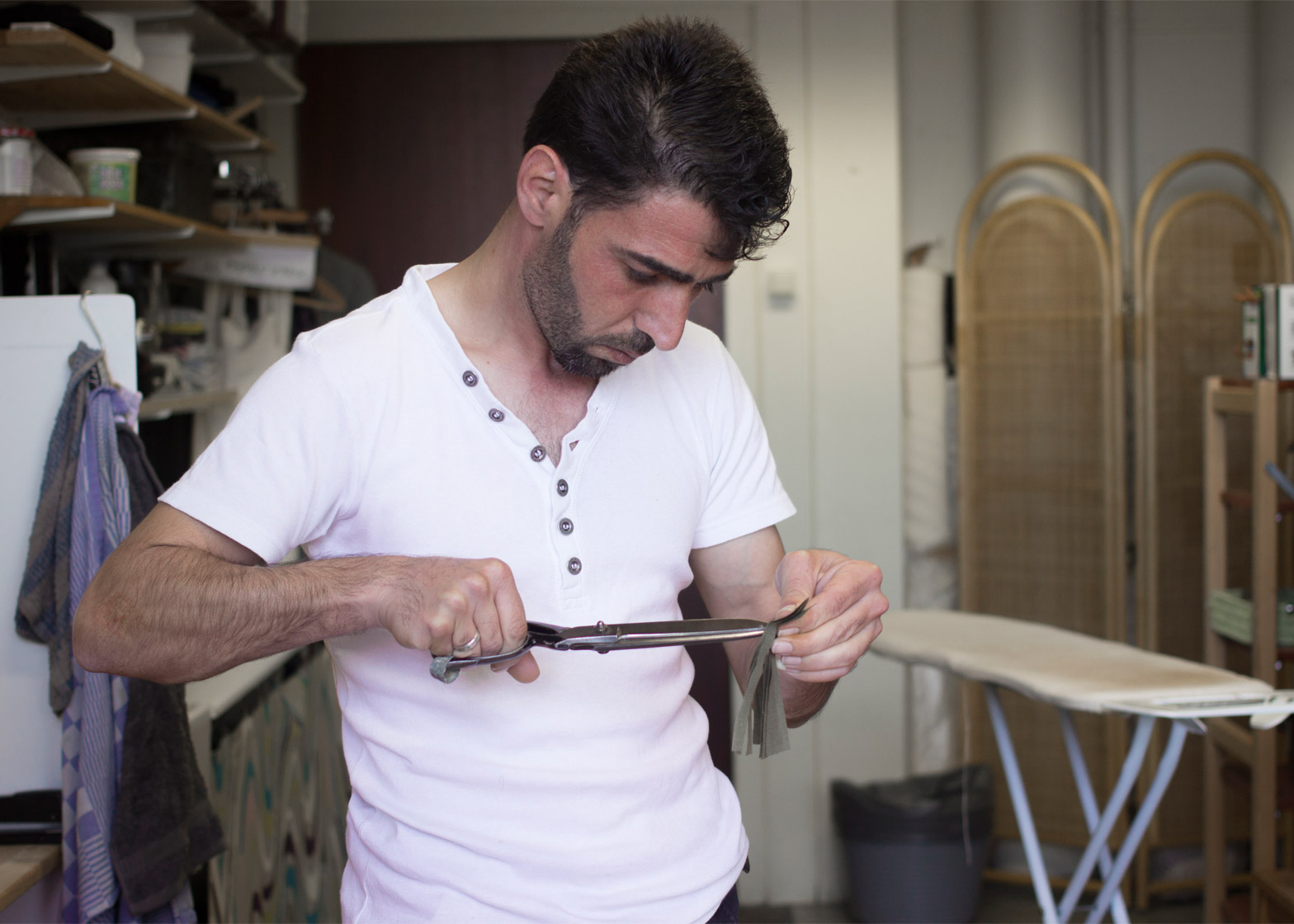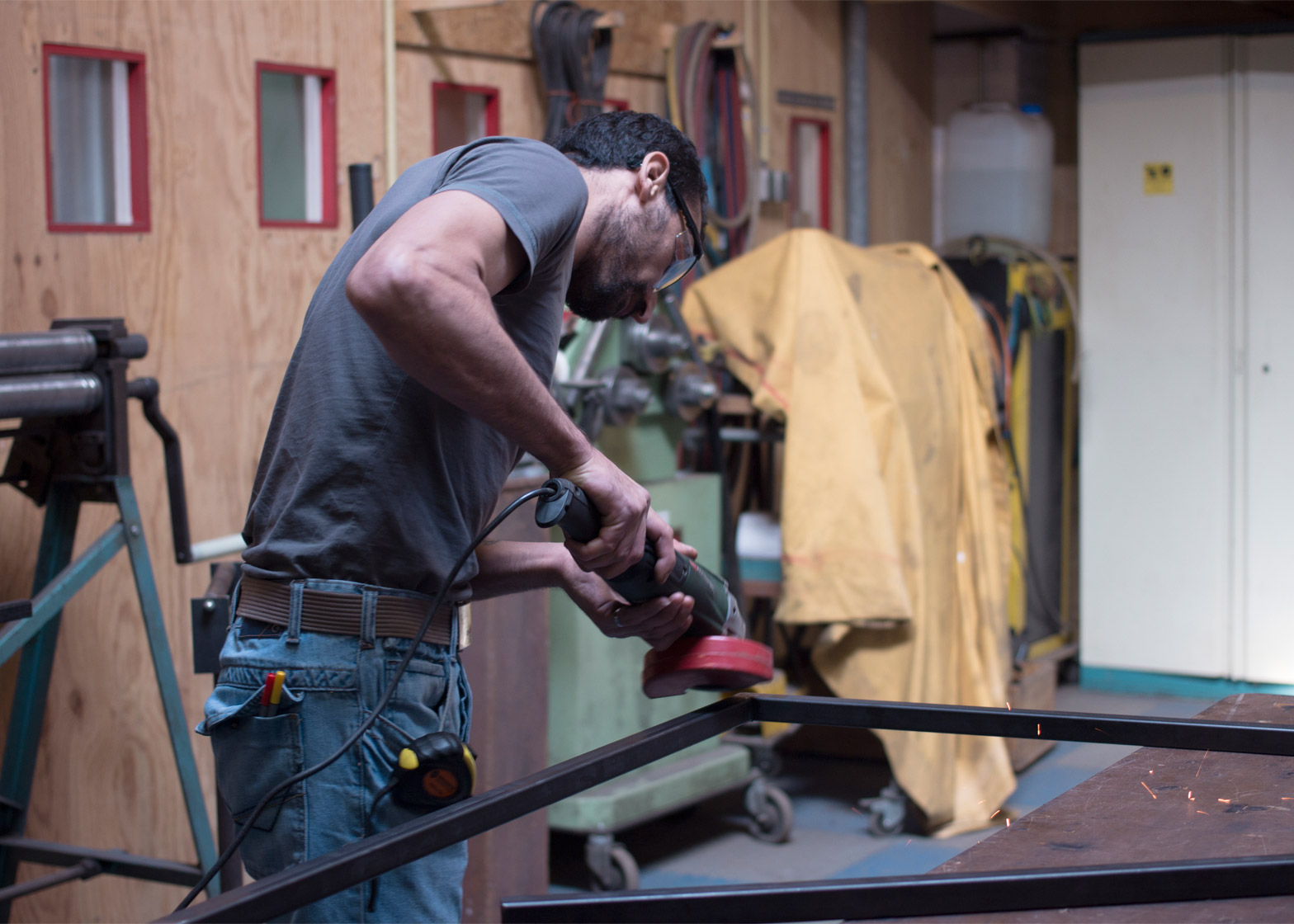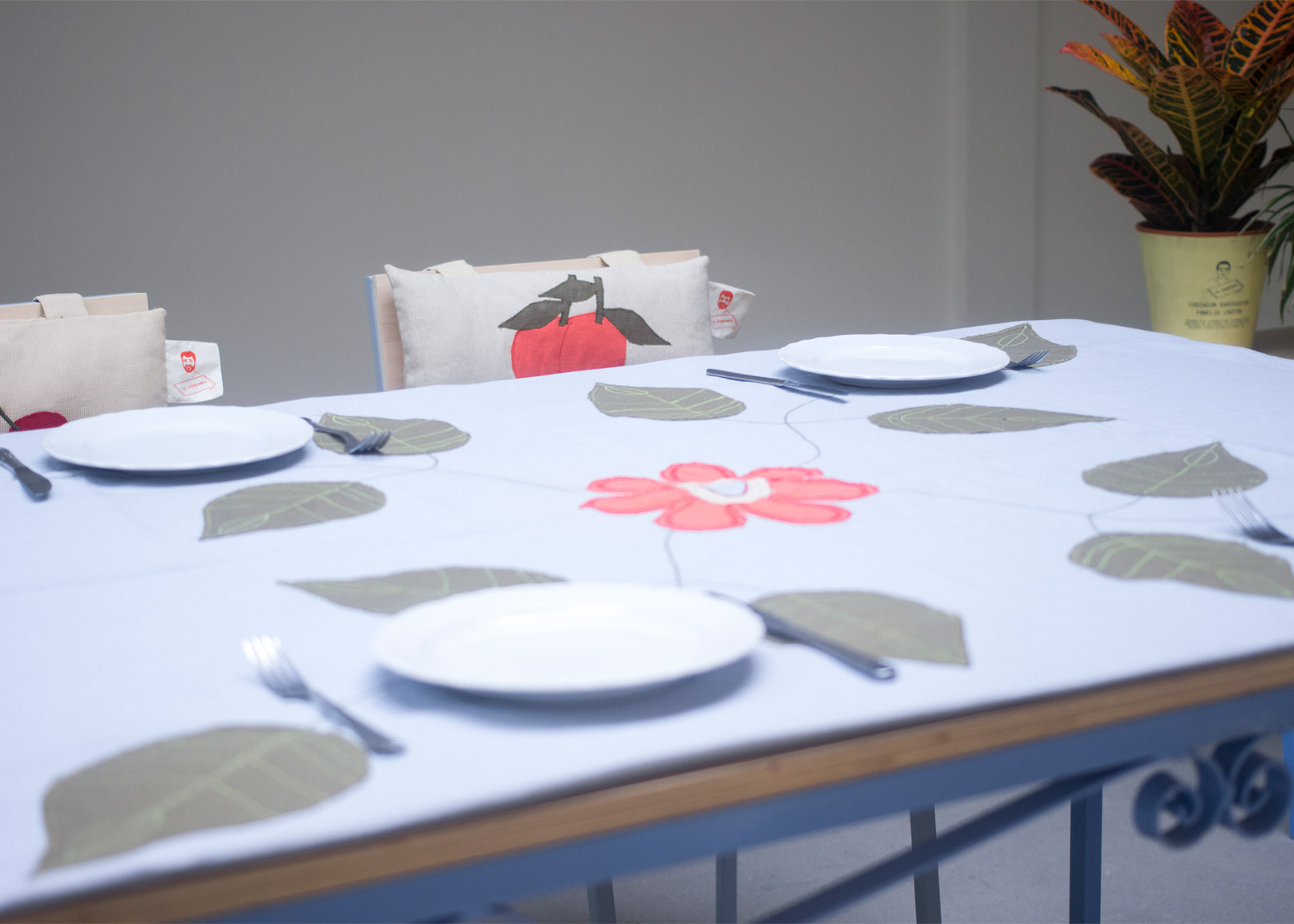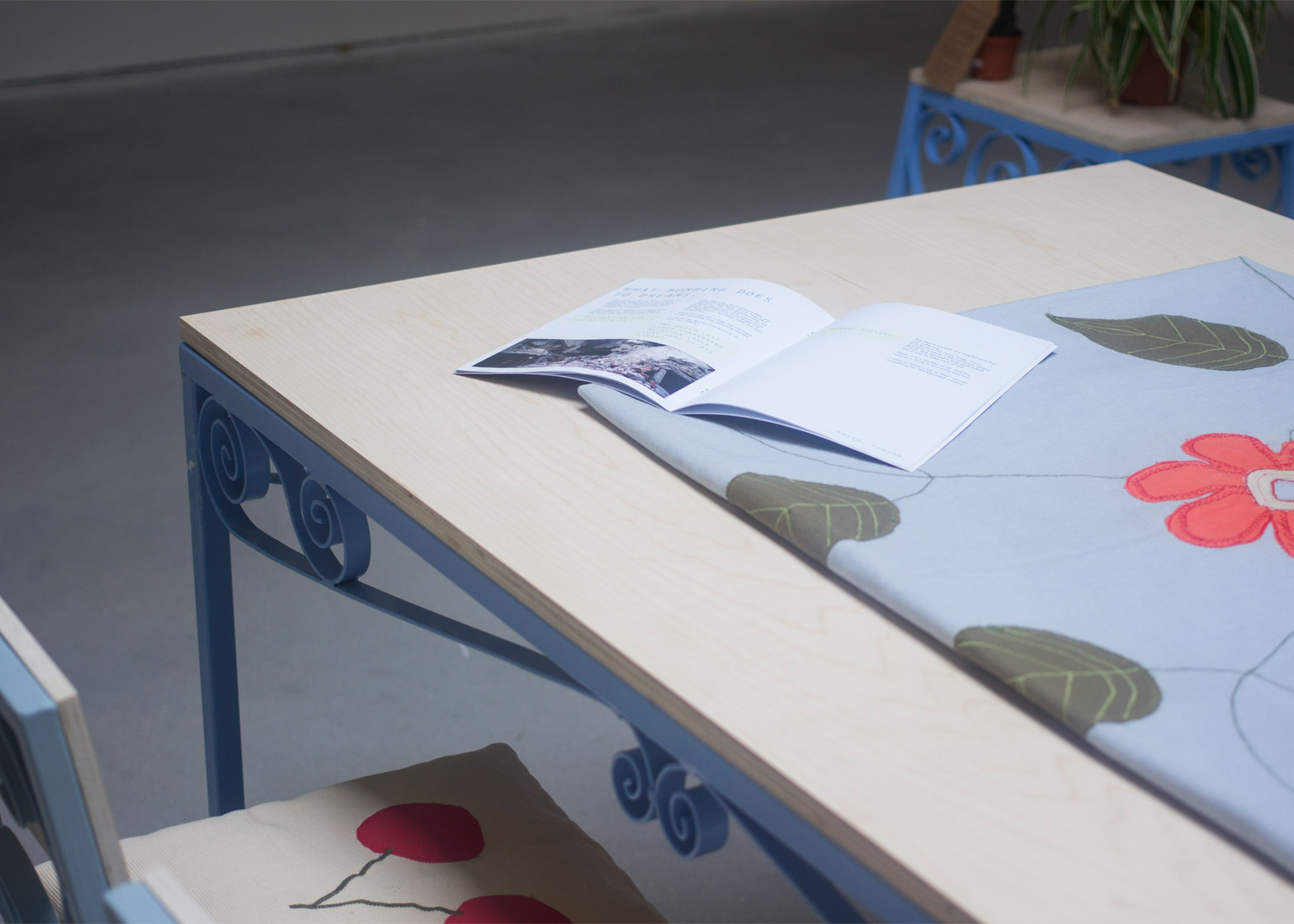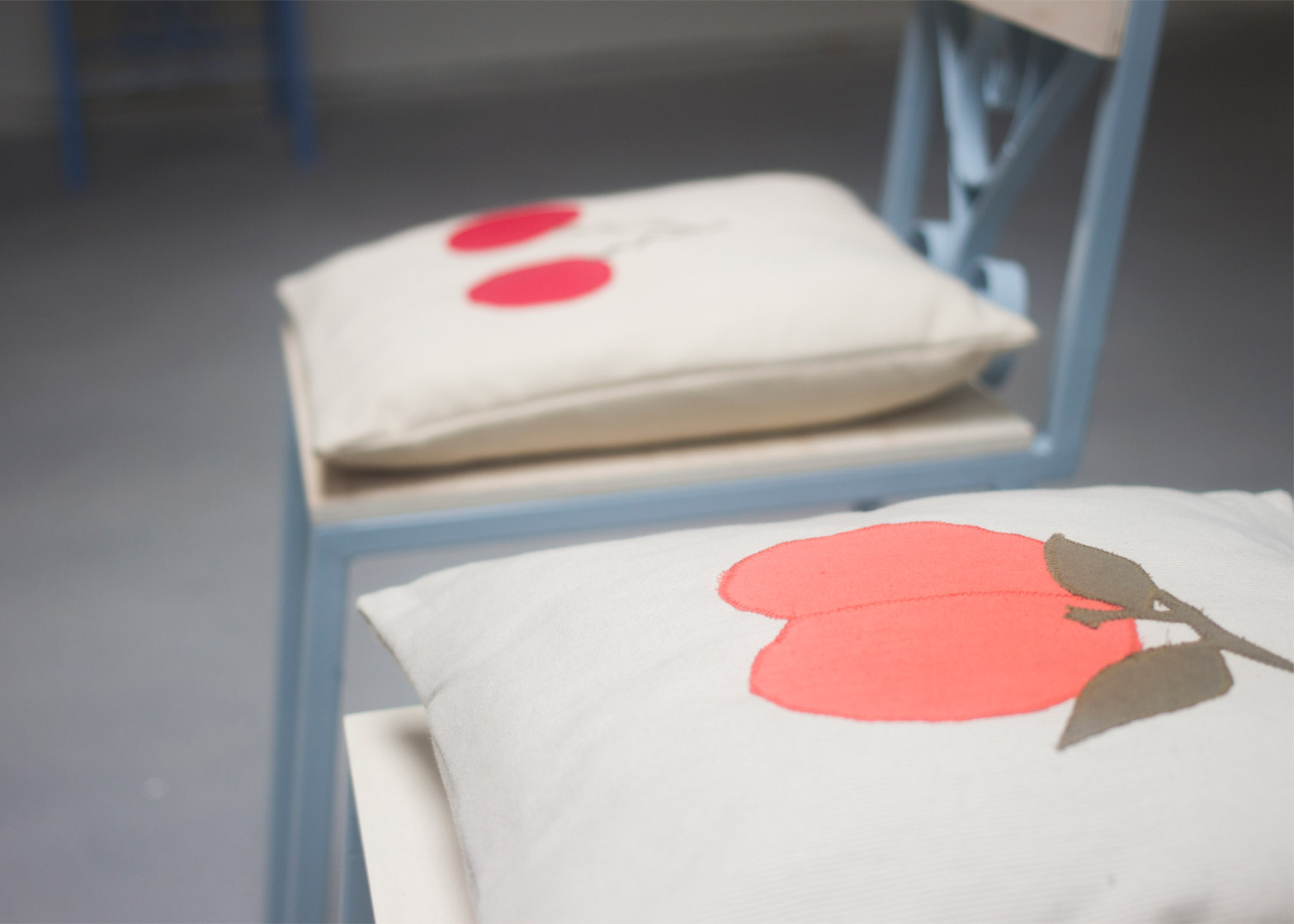Dutch Design Week 2015: Design Academy Eindhoven graduate Pim van der Mijl's De Voorkamer project proposes a communal meeting space to help break down barriers between refugees and local communities in Holland (+ slideshow).
De Voorkamer, meaning the living room, has been designed as a new domestic environment for asylum seekers and locals to socialise, with the aim of helping refugees integrate.
Asylum seekers use their own skills and abilities to contribute self-made objects to the space, such as pieces of furniture or textiles, gradually turning it into something resembling a more welcoming living room.
"I started by visiting refugee centres," van der Mijl told Dezeen. "I noticed there is this huge gap between the centre and the village around. It's very closed off. People living there don't have any activities; they are always dependent on other people. They have a feeling of losing their identity."
"So I thought to break down the barriers of this centre. I found a location outside the centre and did workshops to find their skills and talents and interest. And with these specific skills they developed objects," he added.
Once furnished, the space can be used to host events, with refugees inviting locals to join them to cook and eat together. The designer hopes it will address many refugees' disconnection from the Dutch community and assist in combating perceived stereotypes of refugees as "helpless" or "poorly educated".
"The theme of the event focuses on the participant's past and future, all in a positive way and from an assumption of equality between locals and refugees," he explained.
"With one-on-one encounters, the gatherings allow existing barriers to be dissolved. Finally, in this neutral yet personal environment, new relationships can grow."
Fellow Eindhoven student Manon van Hoeckel also addressed the disconnect between refugees and Dutch society with her In Limbo Embassy – a mobile office that would allow asylum seekers to serve as ambassadors and meet with locals.
De Voorkamer was developed by van der Mijl during his studies at Design Academy Eindhoven. A two-month-long pilot was established in Haren municipality near Groningen in the Netherlands, with eight refugees invited to take part. The designer documented the outcome with a series of photos.
"Continuous insecurity about the future, the long wait and the feeling of lost time all generate stress, which can destroy the capacity to think about the future and in some cases can result in hospitalisation," said van der Mijl.
"By offering possibilities of engaging in meaningful activities De Voorkamer hopes to retrieve or enhance a feeling of dignity, to reduce stress and in that way improve the physical and mental health of the inhabitants of refugee centres."
"I think everybody has to solve this crisis," he added. "Politicians, designers, people. Designers have the power to create projects around topics that get no attention and make them visible. You can spread a thought and make people think."
Van der Mijl's project was on display at the Design Academy Eindhoven graduate exhibition as part of Dutch Design Week 2015, which ran from 17 to 25 October.
During the event, the school's creative director Thomas Widdershoven told Dezeen that Design Academy Eindhoven students were focusing on responding to real-world problems such as Europe's refugee crisis rather than making beautiful objects for collectors.

